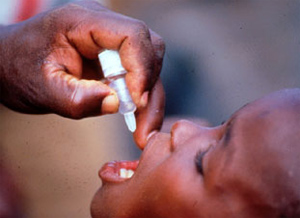
The team led by Dr. Mi-Na Kweon of the International Vaccine Institute in Seoul conducted the research and study. The research was sponsored by the governments of South Korea, Sweden and Kuwait.
Better ways of delivering vaccine have long been under study, ranging from orally to inhaled, but all seem to have faced drawbacks.
Now, Kweon and colleagues say, two doses of influenza vaccine under the tongue of mice primed the animals’ immune system to fight off what would otherwise have been a deadly dose of flu.
Next, they are turning their attention to people, to see if the under-the-tongue vaccine also prompts a strong immune response.
Placing a couple of drops of liquid under the tongue gets the vaccine directly to mucus membranes and prompts a response both in mucus tissues throughout the body as well as in the immune system itself, the researchers said.
“These studies provide a basis for further human testing of this alternative form of needle-free vaccination. Aside from its convenience, sublingual vaccination appears to disseminate immunity to a broader range of organs than the classical routes of injecting or ingesting vaccines,” said Dr. Cecil Czerkinsky, deputy director-general for laboratory science at the Institute.
“If these findings are replicated in humans, they could pave the way for the development of a new generation of vaccines that could be used for mass vaccination against respiratory infections, including the pandemic avian-human influenza viruses,” he said in a statement.
Dr. William Schaffner of Vanderbilt University noted that recent flu studies have involved nasal sprays.
However, he said while he had expected people to be averse to needles, he was surprised to discover that “many people are averse to people messing with their nose … so there are limitations to nasal spray.”
And, he added, “if we were faced with a pandemic, the easier and more acceptable we can make the distribution of the vaccine the more rapidly we can protect a proportion of population.”
Kweon also said in mouse studies there is a theoretical possibility of a nasal spray reaching the central nervous system, which would not happen with the under-the-tongue vaccine.
The under-the-tongue vaccine worked whether it was a live or inactivated virus, Kweon reported. And, she added, it could also be flavored to make it more acceptable.
